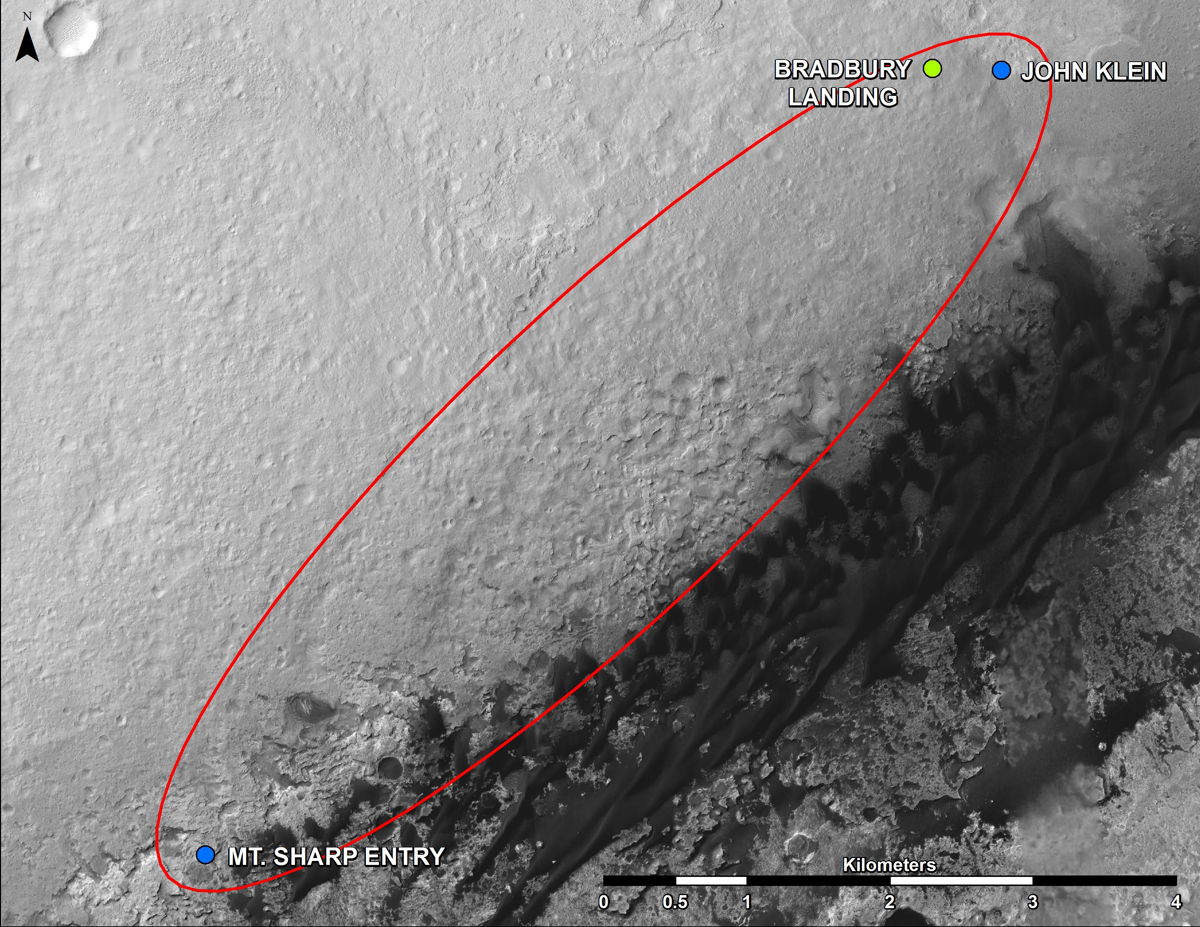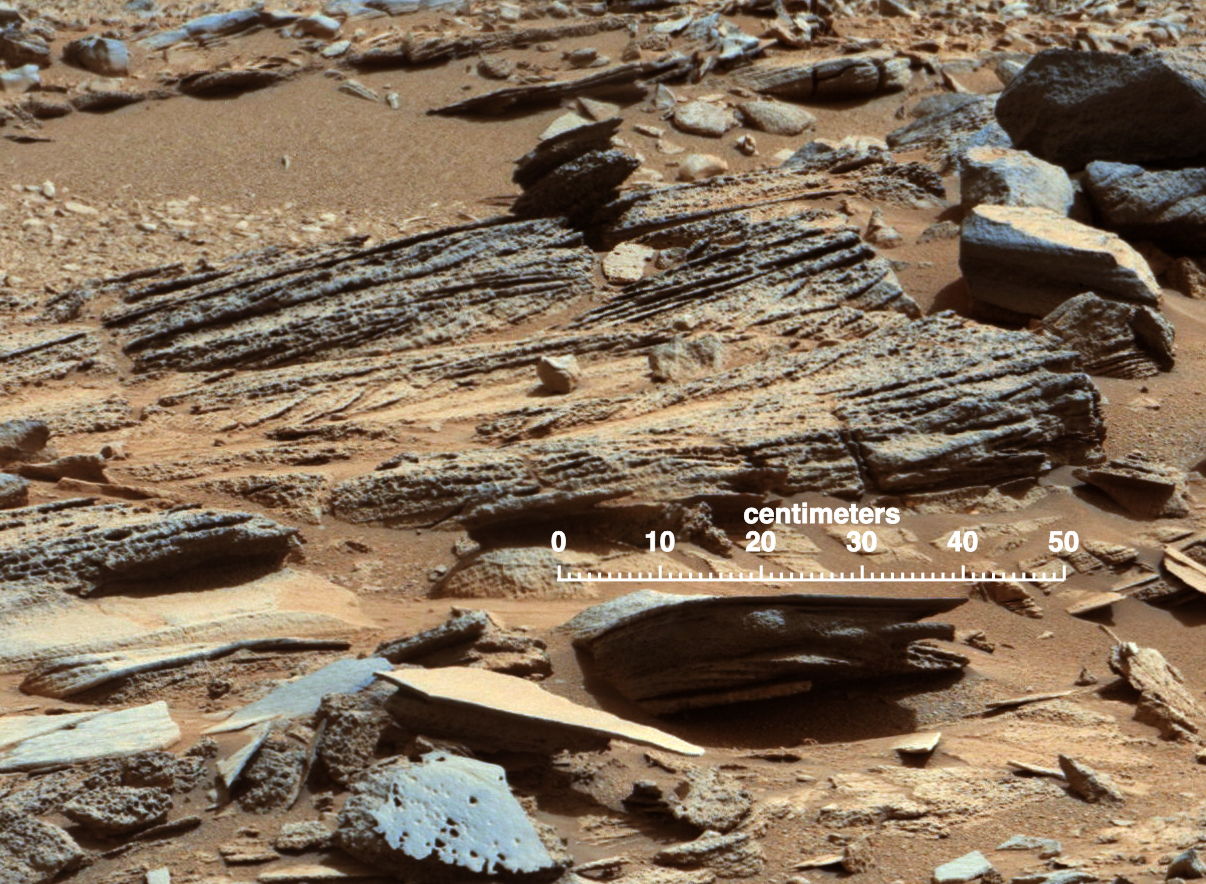
NASA's Mars rover Curiosity is gearing up for its first big road trip, a journey that will carry it through miles of dramatic Red Planet scenery over the course of a year or so.
The 1-ton Curiosity rover has remained close to its landing site since touching down on the Red Planet last August. But it will wrap up work in this area in the next few weeks, and then start trekking toward the base of Mount Sharp, a mysterious mountain that rises 3.4 miles (5.5 kilometers) into the Martian sky, mission team members said.
"We're going to hit the road and embark on a really new phase of the mission," Curiosity deputy project scientist Joy Crisp, of NASA's Jet Propulsion Laboratory (JPL) in Pasadena, Calif., told reporters today (June 5). [Curiosity's Latest Amazing Mars Photos]
Mysterious Mount Sharp
The base of Mount Sharp has been Curiosity's ultimate destination since before the rover launched in November 2011. Mission scientists want Curiosity to read the Red Planet's environmental history like a book as it climbs up Mount Sharp's lower reaches.
"It's like looking at — kind of — the layers in [the] Grand Canyon," Crisp said. "It's preserving a record of how things were in the past and how they changed, as you go from the older rocks at the bottom to younger rocks at the top."
But Curiosity has yet to depart for Mount Sharp's foothills, finding plenty to keep it occupied near its landing site. In February, for example, the rover drilled deep into an outcrop dubbed "John Klein," pulling out samples that allowed the mission team to determine that Mars could have supported microbial life long ago.
Get the Space.com Newsletter
Breaking space news, the latest updates on rocket launches, skywatching events and more!
Researchers wanted to confirm and extend this finding, so last month, they ordered Curiosity to drill another hole in a nearby rock called Cumberland. Analysis of those samples is ongoing, team members said.
Curiosity needs to complete three additional tasks before it can head out for Mount Sharp, Crisp said. The rover will search for differences in hydrogen abundance across two different types of bedrock, and it will take closer looks at intriguing nearby outcrops called Point Lake and Shaler.
"Shaler might be a river deposit. Point Lake might be volcanic or sedimentary," Crisp said in a statement. "A closer look at them could give us better understanding of how the rocks we sampled with the drill fit into the history of how the environment changed."
The rover should finish this work in the next few weeks, at which point it will start heading to the base of Mount Sharp.

A long drive
Mission planners are targeting a section of Mount Sharp's base that lies about 5 miles (8 km) from Curiosity's current location — quite a trek, considering that the rover has put just 2,405 feet (733 meters) on its odometer thus far.
The rover team isn't sure how long the drive will take, saying it will depend on what Curiosity — whose top speed across hard, flat ground is about 0.09 mph (0.14 km/h) — encounters along the way.
"We are on a mission of exploration," said Curiosity project manager Jim Erickson, also of JPL. "If we come across scientifically interesting areas, we are going to stop and examine them before continuing the journey."
Still, he gave a rough estimate for the journey's duration. "I would hazard a guess that somewhere between 10 months and a year might be something like a fast pace," Erickson said.
Follow Mike Wall on Twitter @michaeldwall and Google+. Follow us @Spacedotcom, Facebookor Google+. Originally published on SPACE.com.
Join our Space Forums to keep talking space on the latest missions, night sky and more! And if you have a news tip, correction or comment, let us know at: community@space.com.

Michael Wall is a Senior Space Writer with Space.com and joined the team in 2010. He primarily covers exoplanets, spaceflight and military space, but has been known to dabble in the space art beat. His book about the search for alien life, "Out There," was published on Nov. 13, 2018. Before becoming a science writer, Michael worked as a herpetologist and wildlife biologist. He has a Ph.D. in evolutionary biology from the University of Sydney, Australia, a bachelor's degree from the University of Arizona, and a graduate certificate in science writing from the University of California, Santa Cruz. To find out what his latest project is, you can follow Michael on Twitter.









